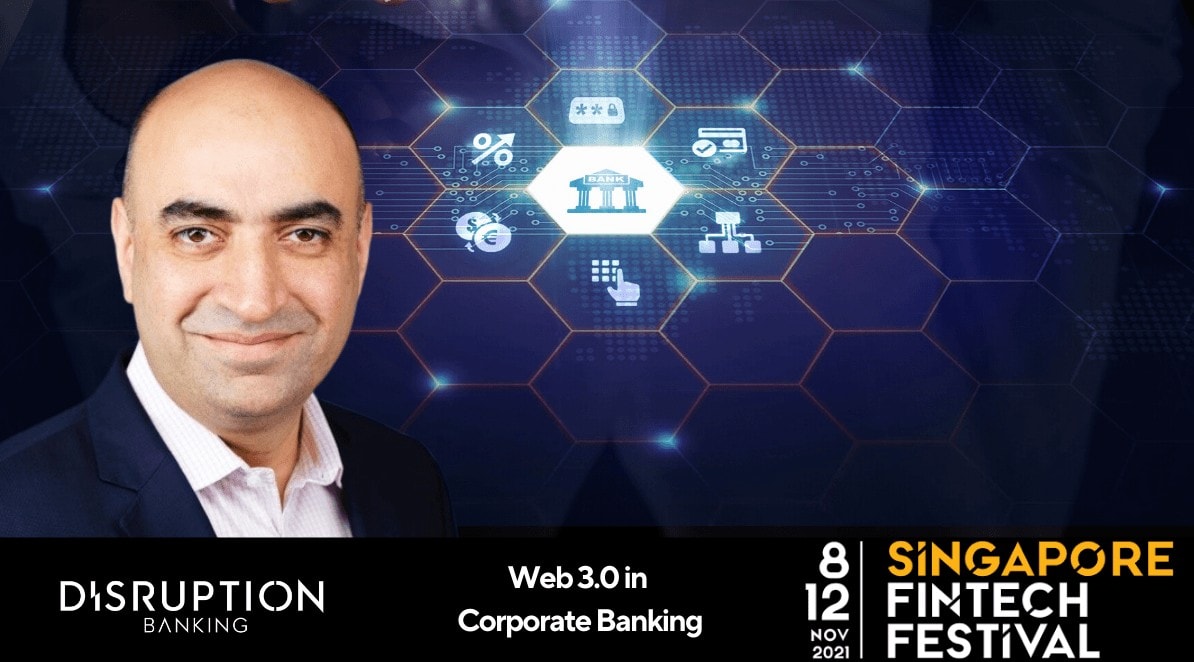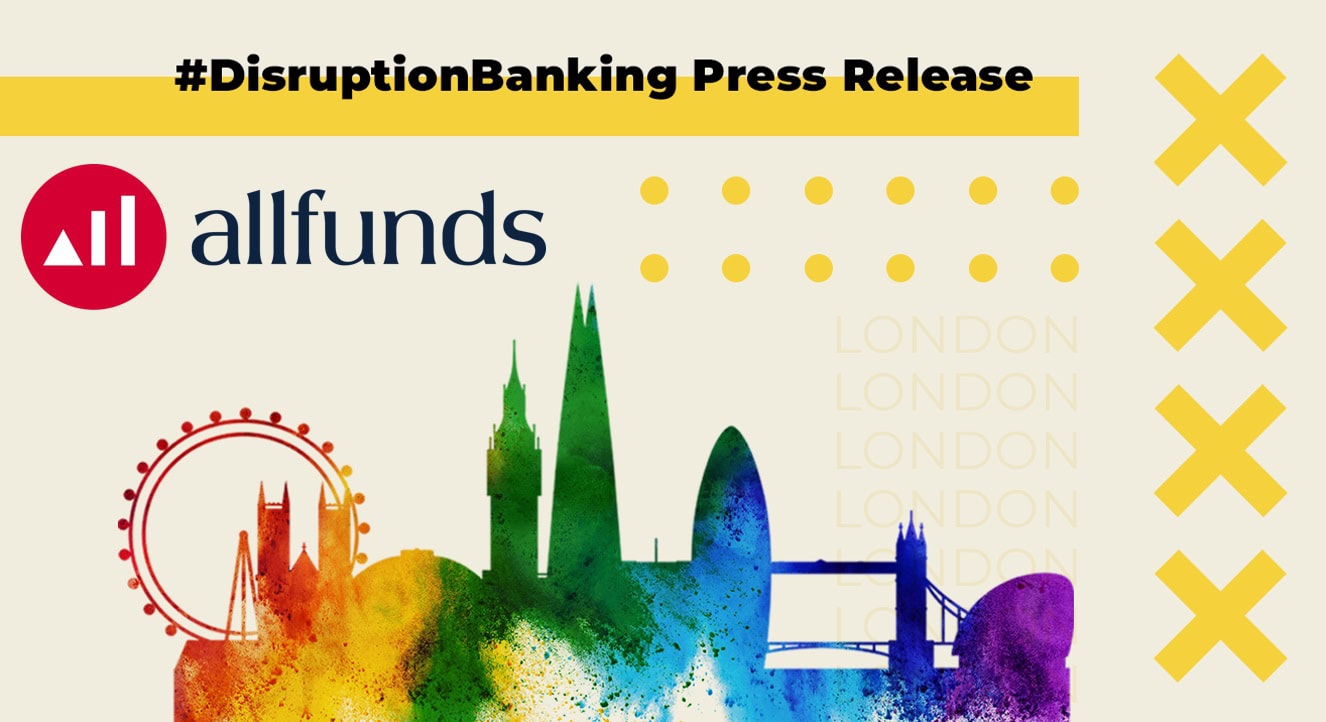Beyond the proponents of DeFi and cryptocurrency, some of the largest financial institutions have also been represented at this year’s Singapore Fintech Festival. In a panel discussion titled “Web 3.0 in Corporate Banking,” Umar Farooq, CEO of Onyx by JPMorgan, shared his insights on how one of the preeminent corporate and investment banks approaches digital transformation, the more widespread use of blockchain technology, and the question of regulation.
According to Umar, JPMorgan has been “very involved” in all kinds of experiments with technology, and blockchain is one of its primary focus areas. In fact, JPMorgan started working on blockchain shortly after Ethereum had come into being many years ago. Since then, the team focusing on blockchain technology has increased significantly, and now Onyx is a separate business unit of JPMorgan that’s fundamentally focused on scaling and commercialising innovative platforms and technologies.
JPMorgan launches blockchain division called Onyx after a big tech client adopts its cryptocurrency for commercial use https://t.co/qHj3w9lwLi
— Business Insider (@BusinessInsider) October 28, 2020
Onyx has re-architected the infrastructure of value transfer, using intelligent, real-time networks to help unlock the potential of distributed ledger technology. It has several platforms that are “at scale and are actively being used by our [JPMorgan’s] peers, corporates and others,” Umar explained:
“We are trying to build corporate solutions for our clients in a manner that is frankly compliant, and brings them additional value above and beyond what they could get with our existing technologies.”
These platforms include Liink, which enables institutions to exchange payment-related information quickly and securely, Coin System, which seeks to address the complex challenges of cross border payments, simplify clients’ liquidity funding needs and offer next generation corporate treasury services, and Blockchain Launch, which is at the forefront of developing and commercializing new applications, networks and shared platform technology. The daily transaction value using Onyx’s platforms and solutions exceed $1 billion a day – “to put it in perspective though, JPMorgan moves around 8-9 trillion dollars on a daily basis,” Umar shared.
The new platform, in partnership with DBS and Temasek, will leverage blockchain technology and speed up cross-border payments, trade transactions and foreign exchange settlements. https://t.co/zxfCC7RUdT pic.twitter.com/Xu7nWcEJPh
— J.P. Morgan (@jpmorgan) April 28, 2021
Decentralised Finance (DeFi) is often thought of as the antithesis tp the traditional banking system. Umar, however, thinks of the DeFi space as a source of inspiration for big corporate banks, which provided them with many ideas how to streamline their existing activities and improve their products.
“We don’t see the DeFi space or the public space as a direct competition. It is still limited to the public blockchain and cryptocurrency realm, which is still not the thing that corporate players do. There are some corporates that hold cryptocurrencies like Bitcoin, but they don’t use it as a means of payments. Maybe some hedge funds or asset managers use it as investment, but not in their day-to-day operations.
Gold will surge to fresh highs in the next year, but investors seeking currency alternatives as global debt balloons should look to #Bitcoin, according to a $7.5 billion hedge fund https://t.co/9lspj4VIK5
— Bloomberg (@business) June 7, 2021
“When we think about the distributed ledger space and what public ecosystems and DeFi is bringing to the table, we are looking at these as future innovations or inspirations. We see – whether it’s Compound, Uniswap or any of the DeFi protocols that have emerged in the last few years – very interesting, inspirational examples of where the world could evolve in the long term.
“In the corporate marketplace, these things don’t move on a monthly or even yearly cycle. We are talking five to ten years before the corporate world really embraces some of this stuff. But that’s the purpose of JPMorgan Onyx; we are always looking at what happens in that horizon.”
Umar thinks that digital transformation in corporate banking will not be a “world-changing” phenomenon, but it will happen step by step. Each step, however, will add some more value to the clients. This idea coincides with former Citigroup CEO’s Vikram Pandit’s take on digital transformation in capital markets: “it is going to be evolutionary rather than revolutionary.” In Umar’s words:
“When you think about the corporate world, they also have to evolve. They cannot interact with some of these things. They have to understand the legal ramifications, accounting, all of that stuff.
“But within the current infrastructure, you’ll see these thought-processes coming very quickly. And we will see the benefits of these sort of through processes within current existing ecosystems in a manner that corporates really don’t change their connectivity, but they can use banks like ours to actually enable them to take benefits and advantages of these new innovations.”
In terms of Defi products that have served as a source of inspiration for Onyx, Umar mentioned its joint project with the Monetary Authority of Singapore and the Banque de France on a CBDC to CBDC exchange.
“Now neither countries have CBDCs, so that was truly an experiment and a view into the future. But the way we built that bridge was actually using DeFi protocols, because if you are going to create these sort of mechanisms across different parts of the world, you would need somewhere to swap them.”
The case for a Singaporean CBDC is "not compelling" according to @MAS_sg, though the central bank is laying the technological foundations for one.
— CoinDesk (@CoinDesk) November 9, 2021
By @JamieCrawleyCD https://t.co/lpDfbdEEaR
Finally, Umar has also touched on one of the recurring topics in any conversation about DeFi: regulation. When it comes to regulation, Umar favors an activity-based one. This means that the technology used should not determine how the system is regulated, but the activity that is performed.
“What is the primary role of regulators? To minimise risk in the system, and, frankly, to protect, more than anything else, the consumers and the corporates that are clients. From our point of view, that’s what they are here to do, and I think it is a very important role to play.
“These things [DeFi solutions] are moving very fast; they are hard to understand – even within corporates and banks. It’s not like people have been able to get up to speed on these things already. So it will take a bit of time.
“But from our point of view, the core principle is if it is the same activity, and causes the same risk, let’s regulate it the same. You have to look at the activity and the risk that the activity creates. The technology itself is incidental to some extent. So if it is the same activity and has the same risk, it should probably have the same regulation.”
It was a great experience to hear Umar talk about the work they do at Onyx, and we are excited to see how if and how JPMorgan continues to lead the way in the technological revolution – or evolution – among banks.
Author: Benjamin Jenei
#SFFxSWITCH #SGFinTechFest #DeFi #Crypto #InvestmentBanking #Blockchain #Regulation #Ethereum #Bitcoin #Onyx #DistributedLedgerTechnology #DLT #DigitalTransformation
















One Response
There are a few YouTube influencers who are saying Onyx Protocol and JP Morgan Onyx are the same?
I have done extensive research and found no evidence of these claim. Can someone enlighten me?